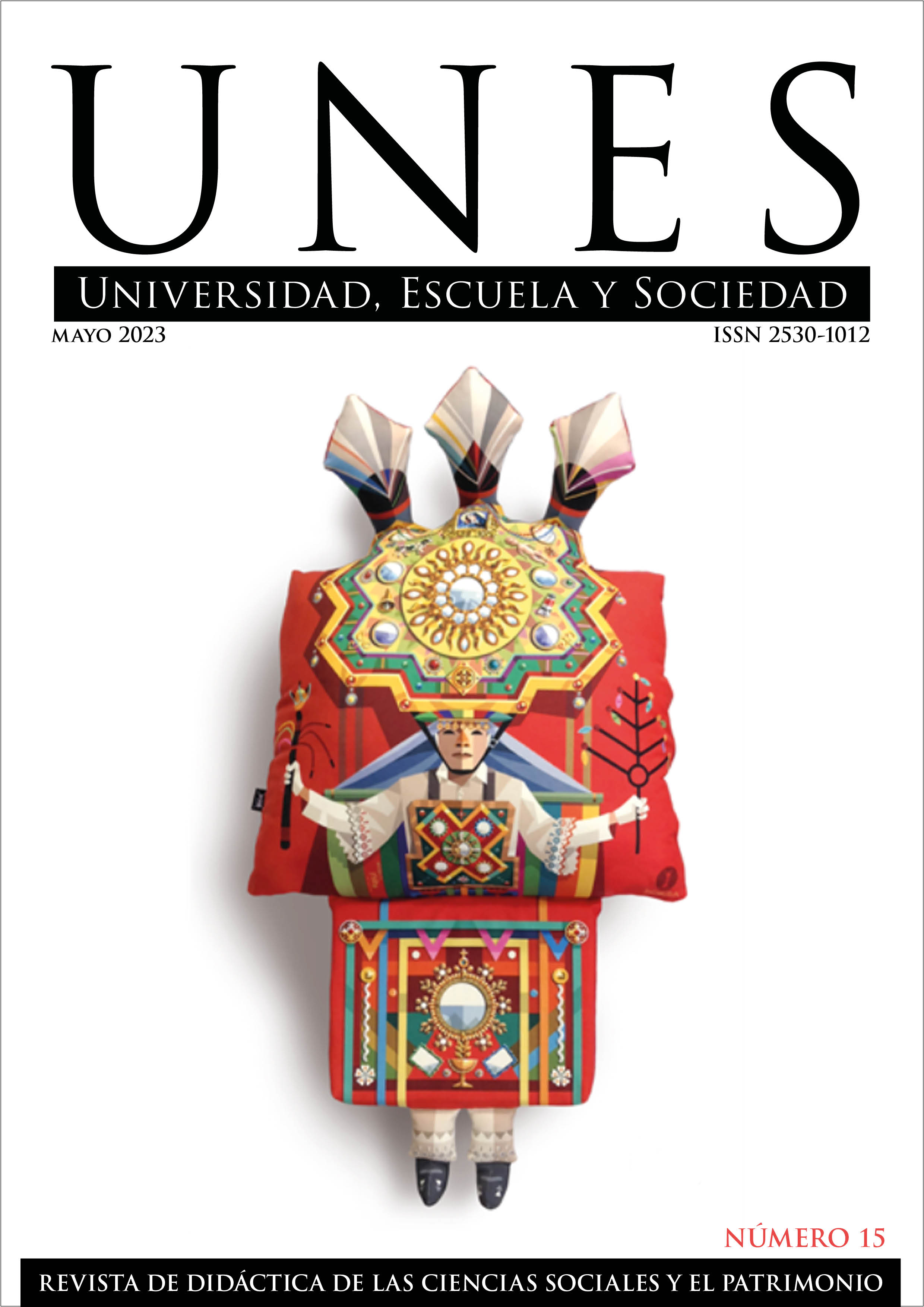Imagine the past. The teaching of history through iconographic sources
DOI:
https://doi.org/10.30827/unes.i15.27491Keywords:
Contemporary History, Iconographic Sources, Visual Literacy, Aesthetic-Plastic Analysis, Education InnovationAbstract
Introduction: Recent studies show that, despite being absorbed in a hypervisual culture, students are not capable of deciphering, understanding and interpret the content and message of the images they observe. Conscious of the need for a visual literacy and convinced of the educational value of iconographic sources in the teaching of history; we present a didactic experience developed in the 4th year of ESO in the contemporary history subject that claims the use of the images.
Description of the project: Using cooperative learning and under the supervision of the teacher, the students divided into five groups, carry out an investigation that links the topics studied theoretically in class with a work of art. Under the leadership of a group, another four work on aspects that concern the artist, the aesthetic-artistic characteristics of the chosen work, identify the main theme combining the historical fact that represents it, and, finally, locate the work and the place or entity that guards it today. The leadership changes with each work along with the work carried out by each group.
Results: A panel with 29 works of art of that summarizes contemporary history in his view, as well as a detailed study of each work in table format that is disclosed to the educational community with small texts on the school’s Facebook page.
Conclusions:The project favors a significant learning of history and starts students in the interpretation and analysis of iconographic sources, thus contributing to their visual literacy and their education in free, critical and democratic citizen by analyzing different works of art.
Downloads
References
Abramowski, A. (2014). “El lenguaje de las imágenes y la escuela: ¿Es posible enseñar y aprender a mirar?, Revista Tramas. Educación, Audiovisuales y Ciudadanía.
Acaso, M. (2007). El lenguaje visual. Ediciones Paidós.
Acaso, M y Megías, C. (2017). Art Thinking. Cómo el arte puede transformar la educación, Paidós Educación.
Augustowsky, G. (2008). Enseñar a mirar imágenes en la escuela, Editorial Tinta Fresca.
Agirre, I. (2015). Teorías y prácticas en educación artística. Ideas para una revisión pragmatista de la expresión artística, Universidad Pública de Navarra.
Apaolaza-Llorente, D y Echeberria Arquero, B. (2019). Haciendo historia: fuentes primarias y metodologías para trabajar el pensamiento histórico en secundaria. ENSAYOS. Revista de la Facultad de Educación de Albacete, 34(1),29-40.
Apaolaza-Llorente, D. (2021). Las tertulias artísticas dialógicas como clave para traer el arte a las aulas, Íber. Didáctica de las Ciencias Sociales, Geografía e Historia. Núm. 104. pp. 62-66.
Díaz Barrado, M. (2012). La imagen en el tiempo: El uso de fuentes visuales en Historia” Historia Actual Online.
https://doi.org/10.36132/hao.v0i29.774
Jardí, E. (2012). Pensar con imágenes. Editorial Gustavo Gili.
Geografia e Historia 4º ES. (2016). Serie Descubre. Edit. Santillana-Zubia.
González Gallego,I, Del Blanco,M, Calavía, M.L, Domínguez, M.R. (2000). “La imagen artística como instrumento didáctico”, Revista Íber. . Didáctica de las Ciencias Sociales, Geografía e Historia, Núm.26.
Gómez Carrasco, C. J y García-González, F. (2019) citado en Sánchez Andújar, I (2022). “Investigar y crear: La creatividad y el trabajo con fuentes históricas como medio para desarrollar el pensamiento histórico en el aula” en Universidad Escuela y Sociedad. Nº 13. pp. 87-93.
http://doi.org/10.30827/unes.i13.25396
Hernández, F. (2010). Educación y cultura visual. Barcelona: Octaedro.
Pujolàs, P. (2002). El aprendizaje cooperativo. Algunas propuestas para organizar de forma cooperativa el aprendizaje en el aula. Documento de trabajo. Laboratorio de Psicopedagogía. Universidad de Vic.
https://www.ugr.es/~fjjrios/pce/media/7a-AprendizajeCooperativoAula.pdf
Royo, M.L y Guiu, M. (2021). ¿Qué historia del arte enseñar en la ESO?,Íber. Didáctica de las Ciencias Sociales, Geografía e Historia. Núm. 104. pp. 7-13.
Sánchez Andújar, I. M. (2022). “Investigar y crear: La creatividad y el trabajo con fuentes históricas como medio para desarrollar el pensamiento histórico en el aula”, Revista UNES. Universidad, Escuela y Sociedad. Nº 13. pp. 87-93.
http://doi.org/10.30827/unes.i13.25396
Triviño, L y Vaquero, C (2019), citado en López, R. (2021). “Epistemología y renovación en la historia del arte. Una experiencia práctica en bachillerato” en Revista Íber. Didáctica de las Ciencias Sociales, Geografía e Historia, Núm.104. pp. 47-53.
Yamil, D. (2019). “Aprender y enseñar a través de imágenes. Desafío educativo” en Revista de Investigación en Artes y Humanidades digitales, nº 17.
Zunzunegui, S. (1984). Mirar la imagen, Servicio Editorial de la Universidad del País Vasco.
Downloads
Published
How to Cite
Issue
Section
License
Copyright (c) 2023 Maddi Elorza Insausti, Berta Echeberria Arquero

This work is licensed under a Creative Commons Attribution-NonCommercial-ShareAlike 4.0 International License.
Authors being published in this journal agree to the following terms:
The authors retain their copyrights but guarantee the journal's right to be the first publisher of the work, licensed under a Creative Commons Attribution-NonCommercial-ShareAlike 4.0 International license, which allows others to share the work, provided that they acknowledge its authorship and initial publication in this journal.
Authors may separately subscribe additional agreements for the non-exclusive distribution of the work published in the journal (for example, including it in an institutional repository or publishing it in a book), with recognition of its initial publication in this journal.
Authors are allowed and encouraged to disseminate their work electronically (for example, in institutional repositories or on their own websites) before and during the submission process, as this may result in productive exchanges, as well as more and earlier citations of the works to be published (See The Effect of Open Access) (in English).






 ISSN-e: 2530-1012
ISSN-e: 2530-1012









